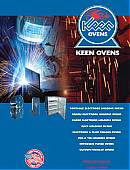Industrial Ovens
Front-Loading
![]() Under 10 cubic feet
Under 10 cubic feet
![]() 10-20 cubic feet
10-20 cubic feet
![]() Over 20 cubic feet
Over 20 cubic feet
![]() See All
See All
Top-Loading
![]() Under 10 cubic feet
Under 10 cubic feet
![]() 10-20 cubic feet
10-20 cubic feet
![]() Over 20 cubic feet
Over 20 cubic feet
![]() See All
See All
Learn About Our Industrial Ovens
Welding Ovens
![]() CONEX Storage
CONEX Storage
![]() Stick Electrodes
Stick Electrodes
![]() Sub-Arc Flux
Sub-Arc Flux
![]() Wire Spools
Wire Spools
![]() Tig Filler Wire
Tig Filler Wire
![]() Multi-Purpose
Multi-Purpose
![]() Nitrogen Purge
Nitrogen Purge
![]() See All
See All
 Order Our Free Catalog Today Click Here |
| Available Inventory |
Variations of the Submerged Arc Welding ProcessThe submerged arc welding process may be varied in a number of ways to give it more capabilities. These include, but are not limited to, varying the number of wires and power sources, adding iron powder to the flux, and using a strip electrode for surfacing. Multi-wire systems offer advantages, because the use of more electrodes can improve deposition rates and travel speeds. The utilization of more than one electrode in submerged arc welding may be accomplished with either a single power source or separate power sources for each wire. The use of multiple power sources with two or more electrodes allows for the utilization of different polarities on the electrodes. Also, with separate power sources for two electrodes, alternating current may be used on one, while direct current is used on the other electrode. Typically, when three wires are used in the tandem position (one electrode is placed in front of the other), alternating current is used. The electrodes are connected to three-phase power systems, which are used for making high-speed longitudinal seams on large pipes and fabricated beams. Adding iron powder to the flux increases deposition rates of submerged arc welding, but it does not decrease the properties of the weld metal. The utilization of a strip electrode for surfacing may be done to save money. This particular welding system uses the strip electrode and flux to make a corrosion-resistant overlay on a less expensive base material such as stainless steel. During this procedure, a wide, uniform bead is produced that has minimum penetration. The uniform bead is necessary to provide a smooth overall surface. The strip welding system is often used for overlaying the inside of vessels. The flux that is used in strip surfacing is made specifically for that purpose. References: Miller Submerged Arc Welding Also See The Submerged Arc Welding (SAW) Process
|